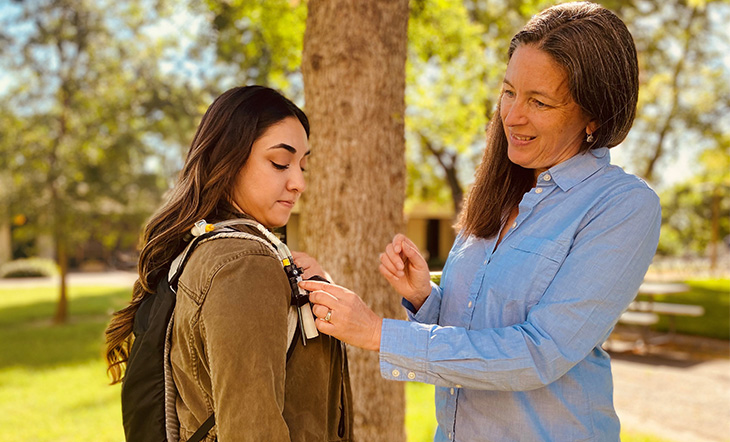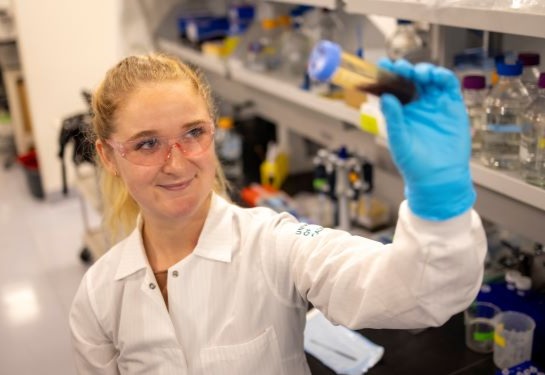Residents in San Joaquin Valley breathe chemical pesticides, according to new study
Research from UC Davis Health found that 22% of adults and 10% of children who took part in an air-quality study in California’s San Joaquin Valley were breathing detectable levels of pesticides. That includes one chemical, chlorpyrifos, that is no longer permitted in California.
The new findings are published in the Journal of Exposure Science and Environmental Epidemiology.
“Although the cohort in our study was small, the findings are significant because they show children and adults in agricultural regions of the San Joaquin Valley of California continue to be exposed to pesticides and herbicides. This is despite efforts to decrease their use,” said Deborah H. Bennett, first author of the study. Bennett is a professor of environmental health at the UC Davis School of Medicine’s Department of Public Health Sciences.
As a heavily agricultural state, California uses millions of pounds of chemical pesticides.
According to data from the California Department of Pesticide Regulation, in 2022, five of the top six counties in California that used the most pounds of pesticides were in the San Joaquin Valley. Those include Fresno, Kern, Tulare, San Joaquin and Madera counties.

Backpack sensors sampled air participants were breathing
The researchers recruited 31 adults and 11 children who lived in three small agricultural towns in the San Joaquin Valley. They gave them backpacks with two special air-collection tubes on the shoulder straps. The location of the tubes allowed researchers to sample the air the participants were breathing.
Each participant wore the backpacks for 1-3 days, eight to 14 hours per day. The combined air sampling took place over a total of 92 days.
When the researchers analyzed the results, they found that seven adults (22% of adult participants) and one school-aged child were exposed to detectable levels of at least one pesticide.
Although the cohort in our study was small, the findings are significant because they show children and adults in agricultural regions of the San Joaquin Valley of California continue to be exposed to pesticides and herbicides.” —Deborah H. Bennett, professor of environmental health, Department of Public Health Sciences
The pesticides found by the sensors on the backpacks include:
- 1,3-dichloropropene, a pesticide used to eradicate parasitic worms
- Chlorpyrifos, a pesticide in use since the 1960s that has been linked to neurologic damage in children
- Pyrimethanil, a fungicide used to prevent mold and mildew
- Burprofezin, an insecticide used to prevent insects
- Penthiopyrad, a fungicide to prevent mold and mildew
- Trifluralin, an herbicide used to control grasses and weeds
When the samples were collected, chlorpyrifos was no longer approved for use in California. Previous research showed that chlorpyrifos has numerous adverse health effects, including acting as a developmental neurotoxin in children and sensitive populations.
Although the toxicity of compounds like chlorpyrifos is known, others are understudied. For example, studies of penthiopyrad in zebrafish found exposure to the chemical resulted in developmental deformities. However, studies of penthiopyrad have not been conducted in mammals, so the potential effects on humans are unknown.
“We need to expand community measuring and monitoring of chemicals routinely used in agriculture,” Bennett said. “New studies are also needed to evaluate the potential toxicity of the chemicals people in California’s agricultural communities are routinely exposed to.”
Participants in this study served as citizen scientists, going about their normal days while wearing the backpacks to collect the samples.
“Many people in agricultural communities are very concerned about pesticide exposure,” said Jane Sellen from Californians for Pesticide Reform, who was a co-author of the study. “They were happy to work with the scientists to collect this much needed data. Even with a small sample size, the results were alarming but not surprising.”
Rebecca Moran, Christopher P. Alaimo and Thomas M. Young of UC Davis are also co-authors on the study.
The project was funded through the California Air Resources Board Community Air Grant (19-CAUP-11) and by the National Institute of Environmental Health Sciences (2P30 ES023513).





